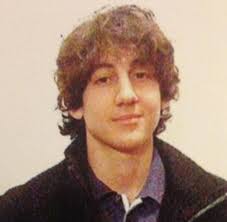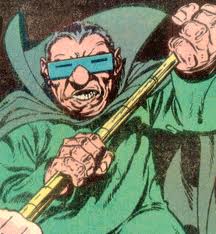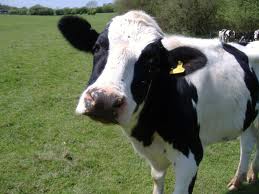1. Dzhokhar Tsarnaev is a homicidal monster who deserves the death penalty for the Boston Marathon bombing. (True/False)
2. Dzhokhar Tsarnaev is a sweet-natured adolescent who fell victim to the corrupting influence of his terrorist older brother. (True/False)
If you circle “True” for either one and “False” for the other, then you are probably living a happy life in a world free of ambiguity and cognitive dissonance. A comic book world. Superheroes and supervillains slice the universe into unambiguous halves, absolute good and absolute evil. No overlap, no gradations, no headache-inducing Venn diagrams, just the world reduced to black and white.
It’s also the world Tsarnaev lives in. “The U.S. Government is killing our innocent civilians,” he said before his arrest. “I can’t stand to see such evil go unpunished.” Tsarnaev was arraigned in Boston last Thursday, and though Massachusetts hasn’t executed anyone since the Golden Age of comics, Attorney General Eric Holder may still try for the death penalty. It’s what all supervillains deserve.
Except are comics really that simple?
“It all started long ago!!” shouts Moleman in Fantastic Four #1, “Because the people of the surface world mocked me!”
That’s the improbably sympathetic motivation of Marvel Comics’ first supervillain. Stan Lee’s caption labels him an “evil antagonist,” but by the end of the issue, Reed scoops him up the way I used to grab my tantrumming son when he was a toddler. Reed even lets the little guy escape, reasoning that “It’s better that way! There was no place for him in our world . . . perhaps he’ll find peace down there . . . I hope so!”
Issue two and Reed is letting more supervillains go free. It turns out those nasty shapeshifting aliens just want to live a “contented” and “peaceful existence”: “We hate being Skrulls! We’d rather be anything else!” So he tells them to turn into cows and hypnotizes them to forget their race’s earth-conquering ambitions. Problem empathetically solved.
But is this how comic books are supposed to work? Aren’t supervillains the cultural standard for one-dimensional evil? Of course this is only 1961; the Silver Age had barely launched. Maybe Lee and Kirby were just warming up. FF issues 4 and 5 we get the real villains. The return of the Gold Age Sub-Mariner and the birth of that ultimate arch-nemesis Dr. Doom!
Except, wait, Sub-Mariner is a poor amnesiac stranded in a Bowery flophouse until the Human Torch dunks him in the harbor. Then he swims back to Atlantis to find “It’s all destroyed! That glow in the water—it’s radioactivity!! The humans did it, unthinkably, with their accursed atomic tests!” His vow to destroy the human race is revenge for the loss of “My family—my friends! My undersea kingdom!” It doesn’t make him a nice guy, but evil? (Would the last survivor of Krypton have responded differently if Earth had A-bombed his home?)
Even Dr. Doom isn’t innately bad, just “badly disfigured.” He was once a “brilliant science student” before his “forbidden experiments” literally exploded in his face. Lee introduces him as an “evil genius,” but later reveals that those tragic experiments were an attempt to contact his beloved mother in the nether world. Next thing he’s a persecuted gypsy seeking revenge on the baron who killed his father. When What If tackled him in 1980, the writers averted that disfiguring accident all together and, what do you know, Doom becomes a superhero.
Before Stan Lee inherited the world of costumed do-gooders from his Golden Age forebears, supervillains were villainous, pure and simple. Luthor wanted to conquer the world for the same unexamined reasons that Superman wanted to protect it: Plot requirements. Forget psychological motivation. It was World War II. Readers needed good guys who were all good, and those good guys needed bad guys who were all bad. But 1961 was a different world. As much as America hated Commies, they were no replacement for purebred Nazis. Comics were ready to reflect the cultural shift.
Lee did not invent the figure of the sympathetic villain. Look at Mary Shelley’s Frankenstein creature or Milton’s Satan. Or, for more immediate influences, Tolkien’s Gollum and Patricia Highsmith’s Ripley, both published in 1955, a year before Silver Age superheroes started their return to newsstands. When Moleman swallowed his first atomic plant, Alfred Hitchcock was already famous for replacing the dog-kicking moustache-twirler of early motion pictures with his own brand of monster, “an ordinary human being with failings.” Moleman is only a few months and a few ticks past Norman Bates’ mother-loving Psycho. A decade later the motif had grown so culturally rampant that when The Who’s Pete Townsend was writing his second (and, alas, never finished) rock opera, he composed the quintessential sympathetic bad guy theme song, “Behind Blue Eyes.”
But Stan Lee did more than ride the zeitgeist. His villains changed only because his heroes changed too. He kept the two yoked, with the universal constants of good and evil flowing up and down their moral seesaw. The victimized Moleman is possible because the Thing is such a jerk. Every time Ben badmouths Johnny or throws a punch at Reed, one cosmic unit of sympathy rolls to the villains’ half of the universe.
Only comic books maintain that equilibrium. Ms. Highsmith’s diabolically talented Mr. Ripley is a lone (and lonely) figure; because his murders are investigated by irrelevant lawmen who soak up little narrative attention, our horror and admiration pivots only on Ripley. Even when sympathetic villains are coupled with worthwhile protagonists, our emotions operate separate pulleys. We can, for instance, feel pity for Gollum (the poor guy started out as the hobbit-like Smeagol before the Ring deformed him) without Frodo losing any of his own hobbity (if rather homoerotic) goodness.
King Kong, HAL, Tony Soprano, they all have their fuzzy side, but none demand a corresponding give-and-grab from an orc-mannered protagonist. Comic books are different. Once Stan Lee recalibrated the universe from its Golden Age settings, other writers obeyed his narrative logic as if obeying laws of physics: When superheroes are assholes, supervillains have to be the nice guys.
Look at Dr. Impossible in Austin Grossman’s Soon I Will Be Invincible. His quest for world domination is just his way to make superhero bullies respect him. Especially that obnoxious jock CoreFire, the biggest jerk in his middle school of a multiverse. Joss Whedon’s Captain Hammer is worse. Dr. Horrible of Dr. Horrible’s Sing-Along Blog is a tender-hearted sweetheart. Sure, he wants to rule the world, but, unlike Hammer, he would never steal another guy’s gal and fake his way into her bed.
Alan Moore revolutionized comics in the 80s by pushing Lee’s laws of conservation to their ultimate end. The homicidal Rorschach skids so far down the moral seesaw, there’s nowhere for his nemesis Moloch to go but into retirement. He’s just some old guy (albeit pointy-eared) terrified of superheroes jumping out of his refrigerator. Rorschach’s own teammate gives Moloch cancer and then a bullet in the brain. Moloch is purely sympathetic. Why? Because the villainy of those Watchmen tips the scales over. There’s no room for supervillains in Moore’s lopsided universe. The so-called heroes hog all the traits, both good and bad.
When Bob Kane and his writing team dealt out the Joker in 1940, he was an unabashed lunatic. His nominal motive was theft, but he took way more demonic glee in his murders. Why? No reason. Not till Alan Moore gave one in his 1988 The Killing Joke. Turns out the Joker was a sweet young newlywed before being grabbed by some thugs and set up as their red-hooded fall guy. Next thing Batman’s knocking him into a vat of chemicals, and what crawls out is now tragic by contrast. Moore’s supervillain rewrite was only possible after Frank Miller’s 1986 Dark Knight Returns. Miller emphasized the Dark over the Knight, catapulting Batman into the old Joker’s half of their ying-yang universe.
By the time Mark Waid and Alex Ross put out Kingdome Come in 1996, there was no longer any difference between the new generation of supervillains and superheroes. Right now I’m reading Gladstone’s School for World Conquerors. The students are all “adorable” middle school Molemen in the making. I bought it for my son because his favorite novels are about misunderstood supervillains or misunderstood sons of misunderstood supervillains. Catherine Jinks’ Evil Genius, Eoin Colfer‘s Artemis Fowl series. More evidence of seismic flattening.
Gladstone creators Mark Andrew Smith and Armand Villavert uphold Lee’s principles of cosmic proportion too. Good and evil have completely leveled out. Superheroes and supervillains are pals, staging fake battles in order to prevent a “return to the draconian days of old.” One retired villain does volunteer garden work at the school: “It’s relaxing and peaceful for me.” The same quiet fate Reed gave those shapeshifting cows from outer space.
Or, as one Skrull declares in the final frame: “Mooo!!”
If I could, I’d transform and hypnotize Dzhokhar Tsarnaev too. Yes, he’s a terrorist monster (3 dead, 260 wounded). And, yes, he’s also a nineteen-year-old scholarship student who people considered “a sweet guy” with a “heart of gold,” “a lovely, lovely kid,” “so grateful to be here in school and to be accepted, ” “a model of good sportsmanship,” “never in trouble,” “not the kind of guy who would hurt anyone,” someone who “believed in people,” “one of ‘us.’”
His twenty-six-year-old and conveniently dead brother, Tamerlan, is uglier, a competitive boxer arrested for assaulting his girlfriend. His YouTube account includes a playlist of terrorism videos. He bragged, “I don’t have a single American friend, I don’t understand them.”
We don’t understand you either, Tamerlan. Which is the heart of our mutual problem. It’s easy to call you a monster and go back to our unexamined lives. Who doesn’t want to live in an old school comic book? They call it the Golden Age for a reason.



There is some evidence that Lee didn’t invent anything, except to remake himself into a sort of supervillain when he claimed recently in court to be the sole creator of the Marvel characters, in order to prevent the family of the man who DID create MOST OF the Marvel characters, Jack Kirby, from getting any part of the billions made from Kirby’s creations—-as of now, they have received and will continue to receive nothing.
I agree that Marvel’s behavior toward Kirby is horrific, and so is Lee’s to the degree that he supports them. But I was reading the actual 2011 deposition recently and was surprised that Lee’s testimony isn’t quite as damning as I’d heard. He certainly doesn’t claim to be the sole creator of anything. The legal sticking point is whether both he and Kirby were paid for their creative work at the time and that it was understood that all rights to their work belong to Marvel. Kirby’s heirs are contesting that notion; Lee, unfortunately, is not.
He claims there and increasingly in various places, and reversing things he said on the record in previous years, to be the individual within his various collaborations who did the actual creating. His descriptions of the contributions of his various collaborators presents what they brought to the mix as nearly accidental, as if it was merely an unconscious function of the act of drawing, and always only at the service of his initial spark of inspiration, rather than the way these things actually came about, developing on the boards of the artists and due to their inspiration, drawn in full with all intricacies of narrative developed most often totally by the artists with little or no input from Lee, to be overwritten in blurbs, captions and balloons by the editor, who took full writing credit and pay at his artists’ expense.
At any rate, in the recent court testimony Lee, having gotten his settlement of millions, did what was in his power to ensure that his artists could not do the same. He did not have to do so, it was his choice but in so doing, he deliberately opposed the depositions of artists who had worked at Marvel, including a statement that comprised one of the last acts of an artist who always defended Lee to me, Gene Colan. For shame.
Of course, that wasn’t the main focus of the piece above but I had a hard time letting the casual invocation of Lee as a creative force go by.
Sorry– I’m not keeping up with the Marvel litigation.
Just to say, this article offers an interesting comparison. Tragic heroes are either villains or madmen, often both– a fine reason to give the cute terrorist his own Rolling Stone cover.
Yet another reason, incidentally, that, as with the tragic white man in Jane Eyre, doing something evil (like the kid did in the Pixies video I whined about on HU) doesn’t necessarily make you a bad guy.